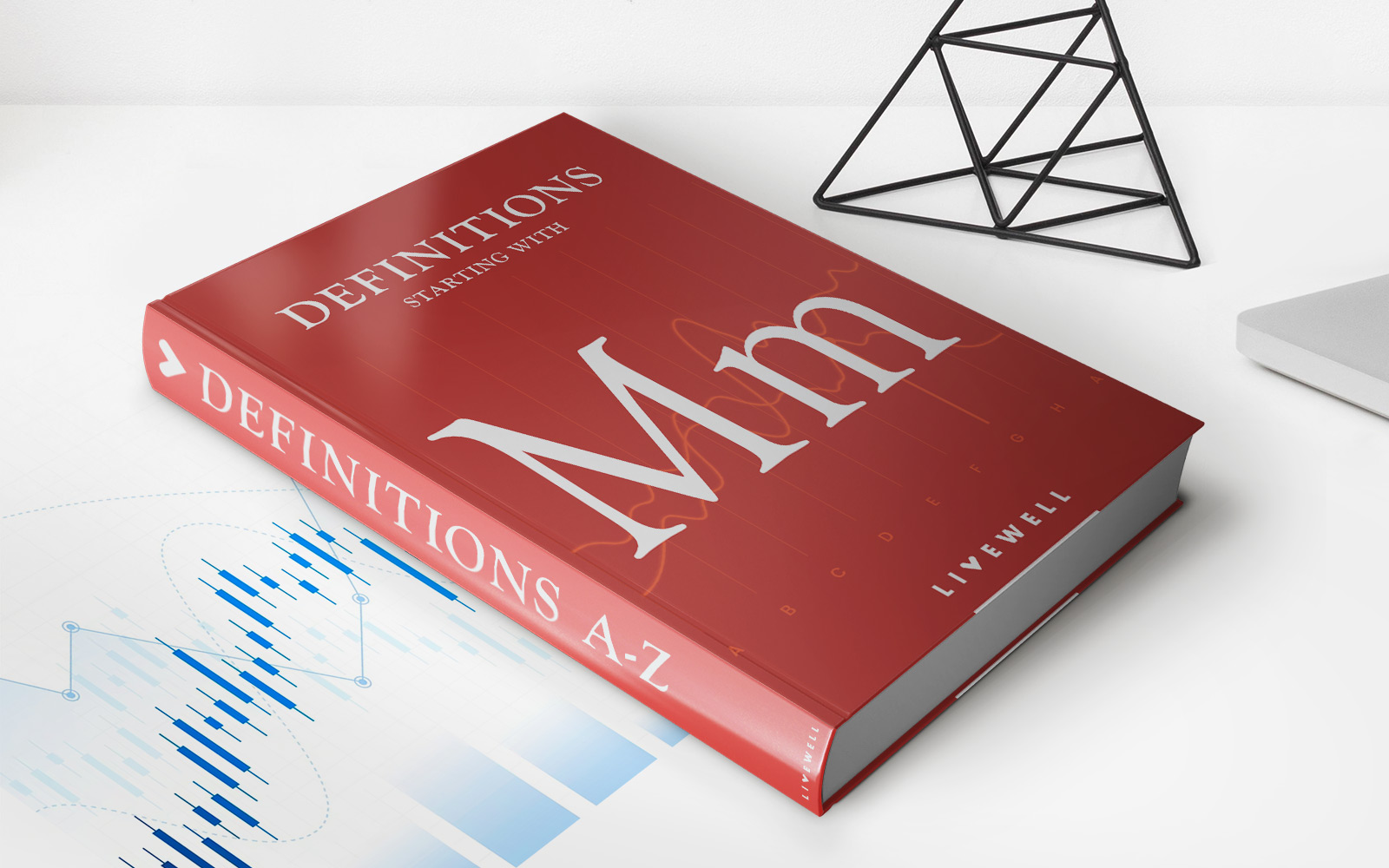

Finance
How To Value Synergies In M&A
Published: February 23, 2024
Learn how to value synergies in M&A and understand their impact on finance. Gain insights into the financial aspects of mergers and acquisitions.
(Many of the links in this article redirect to a specific reviewed product. Your purchase of these products through affiliate links helps to generate commission for LiveWell, at no extra cost. Learn more)
Table of Contents
Introduction
In the dynamic landscape of mergers and acquisitions (M&A), the concept of synergy holds profound significance. Synergy, in the context of M&A, refers to the potential benefits and advantages that arise from the combination of two entities that are greater than what each could achieve individually. This fundamental principle underpins the strategic rationale behind M&A transactions and is a critical factor in determining their success.
The evaluation and quantification of synergies play a pivotal role in the decision-making process of M&A. Understanding the various types of synergies, methods for valuing them, and their financial impact is essential for stakeholders involved in M&A transactions. By delving into these aspects, one can gain valuable insights into the complexities and opportunities inherent in the M&A landscape.
Synergies encompass a broad spectrum of potential advantages, including cost savings, revenue enhancement, operational efficiencies, and strategic positioning. As such, they are integral to the strategic objectives of M&A deals, influencing the valuation, integration, and overall success of the combined entity.
In this comprehensive guide, we will delve into the intricacies of valuing synergies in M&A, exploring the different types of synergies, methods for their evaluation, and the financial implications they entail. By gaining a deeper understanding of these concepts, stakeholders can navigate the complexities of M&A transactions with clarity and insight, ultimately maximizing the value and potential of the combined entities.
Understanding Synergies in M&A
At the core of M&A transactions lies the concept of synergy, which represents the potential for two merging entities to achieve greater value together than they could individually. Synergies are the driving force behind the strategic rationale for M&A, as they offer the promise of enhanced competitiveness, efficiency, and profitability.
When two companies join forces through M&A, they aim to leverage their combined strengths to create a more formidable and value-generating entity. This can involve streamlining operations, eliminating duplicate functions, accessing new markets, and harnessing complementary capabilities. By doing so, the merged entity seeks to achieve a level of performance and potential that surpasses the sum of its parts.
It is crucial to recognize that synergies can manifest in various forms, each contributing to the overall value proposition of the M&A deal. Whether through cost savings, revenue growth, improved operational efficiency, or strategic positioning, synergies serve as the cornerstone of value creation in M&A transactions.
Moreover, understanding the nuances of synergies in M&A is essential for stakeholders to effectively assess the potential benefits and risks associated with a transaction. By comprehending the specific synergistic opportunities and challenges inherent in the combination of two entities, stakeholders can make informed decisions and develop strategies to optimize the value creation process.
Ultimately, the ability to identify, assess, and capitalize on synergies is a critical determinant of M&A success. By gaining a comprehensive understanding of the multifaceted nature of synergies in M&A, stakeholders can navigate the complexities of the deal-making process with clarity and foresight, positioning the combined entity for sustained growth and competitive advantage.
Types of Synergies
Synergies in M&A transactions can be classified into several distinct categories, each representing unique avenues for value creation and enhancement. Understanding these different types of synergies is essential for stakeholders to grasp the multifaceted nature of potential benefits that can arise from the combination of two entities.
1. Operational Synergies: Operational synergies encompass the potential for efficiency improvements and cost savings resulting from the integration of business operations. This may involve streamlining processes, consolidating facilities, optimizing supply chains, and leveraging economies of scale to reduce expenses and enhance productivity.
2. Financial Synergies: Financial synergies pertain to the opportunities for improved financial performance and capital utilization arising from the M&A transaction. This can include enhanced access to capital, improved credit ratings, optimized capital structure, and favorable tax implications, all of which contribute to strengthening the financial position of the combined entity.
3. Strategic Synergies: Strategic synergies revolve around the potential for the combined entity to achieve strategic advantages that were unattainable individually. This may involve accessing new markets, expanding product portfolios, leveraging complementary capabilities, and enhancing competitive positioning, thereby creating new growth opportunities and competitive advantages.
4. Technological Synergies: In today’s digital age, technological synergies play a crucial role in M&A transactions. This involves leveraging advanced technologies, intellectual property, and R&D capabilities to drive innovation, enhance product development, and gain a competitive edge in the market.
By recognizing and categorizing these diverse types of synergies, stakeholders can gain a comprehensive understanding of the potential value drivers and opportunities that underpin M&A transactions. Each type of synergy presents unique prospects for value creation and competitive advantage, highlighting the multifaceted nature of synergies in shaping the strategic and financial outcomes of M&A deals.
Methods for Valuing Synergies
Valuing synergies in the context of M&A transactions is a complex and nuanced process that requires careful assessment and analysis. Several methods are commonly employed to quantify the potential value that synergies can bring to the combined entity, providing stakeholders with valuable insights into the expected benefits of the transaction.
1. Comparable Company Analysis (CCA): CCA involves evaluating similar M&A transactions and their resulting synergies to estimate the potential value that could be realized in the current deal. By comparing relevant industry benchmarks and historical data, stakeholders can gauge the potential synergistic benefits and their financial impact on the combined entity.
2. Discounted Cash Flow (DCF) Analysis: DCF analysis is a widely used method for valuing synergies by estimating the present value of the expected cash flows resulting from the combined entity’s operations. By discounting future cash flows to their present value, stakeholders can assess the incremental value generated by synergies and their impact on the overall financial performance of the merged entity.
3. Premium Analysis: Premium analysis involves evaluating the premium paid in an M&A transaction relative to the standalone value of the target company. This method helps assess the additional value attributed to synergies, providing insights into the potential benefits that justify the premium paid and the expected financial impact on the acquirer’s performance.
4. Contribution Analysis: Contribution analysis involves quantifying the incremental contribution of synergies to key financial metrics, such as revenue growth, cost savings, and EBITDA margins. By isolating the specific financial impact of synergies, stakeholders can gain a clearer understanding of their influence on the financial performance and value creation potential of the combined entity.
5. Real Options Analysis: Real options analysis is utilized to assess the strategic value of synergies by considering the flexibility and strategic opportunities they present to the combined entity. This method helps stakeholders evaluate the potential upside and downside scenarios associated with synergies, providing a more comprehensive view of their long-term strategic and financial implications.
By leveraging these methods for valuing synergies, stakeholders can gain a comprehensive understanding of the potential value creation opportunities and risks associated with M&A transactions. These valuation techniques enable stakeholders to make informed decisions, assess the financial impact of synergies, and optimize the strategic and financial outcomes of the combined entity.
Financial Impact of Synergies
The realization of synergies in M&A transactions can have a profound financial impact on the performance and value creation potential of the combined entity. By effectively capturing and leveraging synergistic opportunities, stakeholders can drive significant improvements in key financial metrics and position the merged entity for sustained growth and competitiveness.
1. Enhanced Profitability: Synergies, particularly those related to cost savings and operational efficiencies, can contribute to enhanced profitability for the combined entity. By streamlining operations, optimizing resources, and eliminating redundant expenses, the merged entity can realize improved profit margins and overall financial performance.
2. Revenue Growth: Strategic and market synergies can facilitate revenue growth opportunities for the combined entity. Access to new markets, expanded product portfolios, and enhanced competitive positioning can drive top-line growth, creating additional value and market opportunities that were previously inaccessible to the individual entities.
3. Improved Operational Efficiency: Operational synergies, such as streamlined processes, optimized supply chains, and improved resource utilization, can lead to enhanced operational efficiency. This can result in reduced costs, improved productivity, and a more agile and responsive operational framework for the combined entity.
4. Enhanced Cash Flow: Synergies can contribute to improved cash flow generation for the combined entity. By optimizing working capital, capitalizing on financial synergies, and leveraging strategic advantages, the merged entity can enhance its cash flow position, providing greater financial flexibility and resilience.
5. Strengthened Financial Position: Financial synergies, including improved access to capital, optimized capital structure, and favorable tax implications, can strengthen the financial position of the combined entity. This can lead to enhanced credit ratings, reduced financing costs, and improved capital allocation, bolstering the financial stability and resilience of the merged entity.
Overall, the financial impact of synergies in M&A transactions extends beyond immediate cost savings and revenue enhancements. It encompasses a holistic transformation of the financial performance and competitive positioning of the combined entity, setting the stage for sustained value creation and long-term success.
Conclusion
Valuing synergies in M&A transactions is a multifaceted and critical aspect of the deal-making process, shaping the strategic and financial outcomes of the combined entity. The understanding of synergies, their diverse types, valuation methods, and financial impact is essential for stakeholders to navigate the complexities of M&A transactions and unlock the full potential of the combined entity.
By recognizing the various types of synergies, including operational, financial, strategic, and technological, stakeholders can identify the unique avenues for value creation and competitive advantage that arise from the combination of two entities. Moreover, leveraging valuation methods such as comparable company analysis, discounted cash flow analysis, premium analysis, contribution analysis, and real options analysis enables stakeholders to quantify the potential value that synergies can bring to the combined entity, facilitating informed decision-making and strategic planning.
The financial impact of synergies extends beyond immediate cost savings and revenue enhancements, encompassing enhanced profitability, revenue growth, improved operational efficiency, enhanced cash flow, and a strengthened financial position for the combined entity. By effectively capturing and leveraging synergistic opportunities, stakeholders can position the merged entity for sustained growth, competitiveness, and long-term success.
In conclusion, the evaluation and quantification of synergies in M&A transactions are integral to maximizing the value and potential of the combined entities. By gaining a comprehensive understanding of synergies and their financial implications, stakeholders can make informed decisions, drive value creation, and navigate the intricacies of M&A transactions with clarity and foresight, ultimately shaping the success and strategic positioning of the combined entity in the dynamic business landscape.














